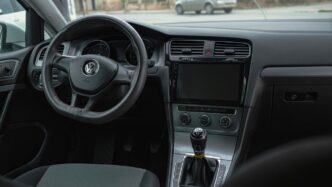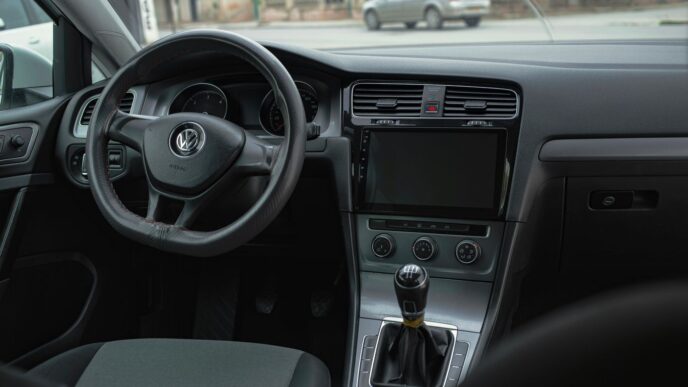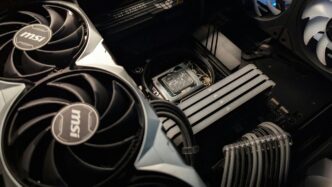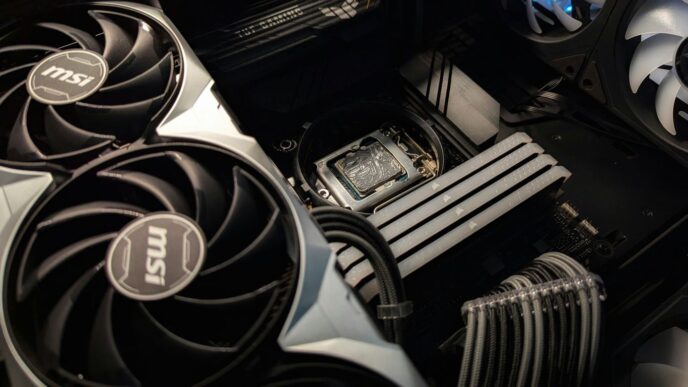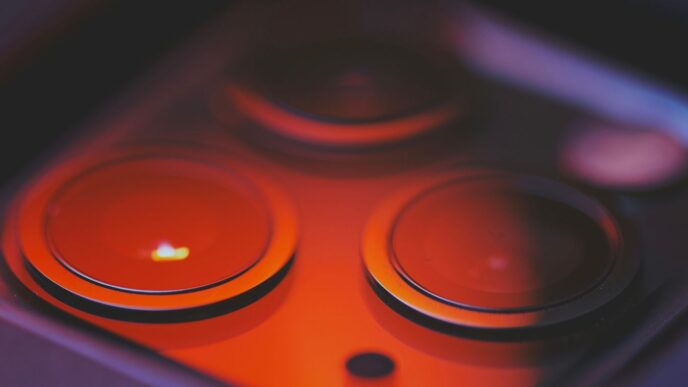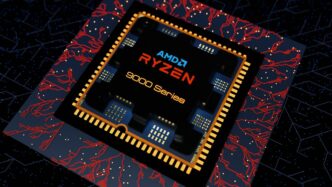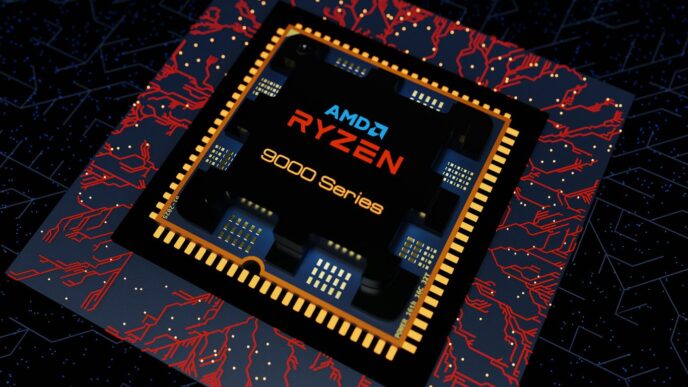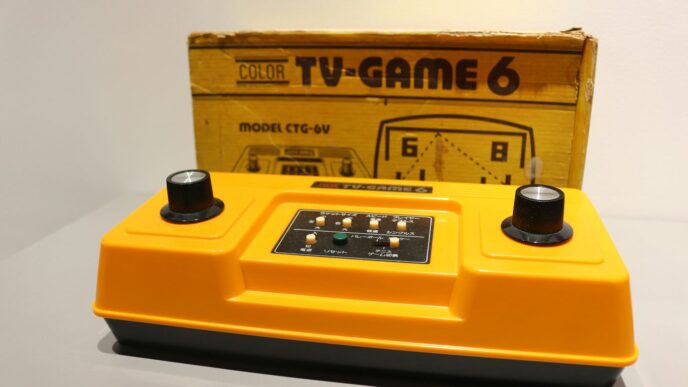Gaming on the go has really taken off, and it seems like new options pop up all the time. It used to be just the Game Boy, but now you can play serious games anywhere you want. It’s kind of hard to pick the right one with so many choices. You probably know the Nintendo Switch is good, but depending on what you like, the perfect handheld could be anything from a cheap emulator to a powerful portable PC. We’ve looked at a bunch of these, trying to figure out which ones are actually worth your money. This guide will help you sort through the best portable consoles available in 2025.
Key Takeaways
- The Steam Deck OLED offers a fantastic screen and a smooth SteamOS experience, great for your existing PC game library.
- The Asus ROG Ally X stands out with its strong performance and a big battery, making it a top pick for serious portable gaming.
- Lenovo Legion Go provides a large display and flexible controls, giving you a unique way to play on the move.
- The Nintendo Switch remains a solid choice for its exclusive games and easy-to-use design, perfect for all kinds of players.
- New models like the MSI Claw 8 AI+ and Acer Nitro Blaze are bringing fresh tech and more choices to the handheld market.
1. Steam Deck OLED
Okay, so the Steam Deck OLED. I gotta say, it’s a solid upgrade if you’re already in the Steam Deck ecosystem. The biggest draw? That gorgeous OLED screen. Seriously, it makes a huge difference. Colors pop, blacks are deep, and everything just looks way better than the original LCD model. If you love your Steam Deck OLED and want a better screen, this is it.
But it’s not just the screen. They’ve also bumped up the battery life a bit, which is always welcome when you’re gaming on the go. Plus, the improved Wi-Fi is a nice touch – no more laggy downloads when you’re trying to grab a new game on the train. It also comes with more storage, which is great because games are only getting bigger.
Here’s a quick rundown:
- Better battery life
- Improved Wi-Fi
- Stunning OLED screen
- More storage options
Now, it’s not a complete overhaul. The hardware under the hood is still pretty similar to the original Steam Deck, so don’t expect a massive performance boost. And the Linux-based OS still has its quirks, especially if you’re used to Windows. But overall, the Steam Deck OLED is a fantastic handheld console, and a worthwhile upgrade if you value a great screen and longer battery life. It’s still the easiest device to navigate and buy games on.
2. Asus ROG Ally X
Okay, so the ROG Ally X is here, and it’s looking like a solid contender. It’s aiming to be a top-tier handheld gaming experience, but let’s get into the details. It’s not just about raw power; it’s about how well that power is managed and delivered to the user.
One of the biggest improvements people are talking about is the battery life. The original Ally had some issues there, so hopefully, this new version addresses those concerns. I remember trying to play Cyberpunk 2077 on the go and watching the battery drain faster than I could say "Wake up, Samurai!"
Here’s a quick rundown of what I’m expecting from the Ally X:
- Improved battery life (obviously).
- Better thermal management (no more burning hands!).
- More comfortable ergonomics (because long gaming sessions are a must).
- A refined software experience (less bloat, more game).
It’s also worth noting that the ROG Ally X is competing in a pretty crowded market. You’ve got the Steam Deck, the Legion Go, and even the Switch still hanging in there. Each has its strengths and weaknesses, but the Ally X needs to carve out its own niche. The mobile processing market is getting more competitive, so it’ll be interesting to see how ASUS positions this device.
I’m cautiously optimistic. If ASUS can deliver on these improvements, the ROG Ally X could be a real winner. But, as always, the proof is in the playing.
3. Lenovo Legion Go
The Lenovo Legion Go is still a strong contender, even with newer devices hitting the market. It’s got a unique design, and while it might not be the absolute top performer, it offers a solid gaming experience. The big selling point? That massive 8.8-inch display. It’s great for showing off games, and the detachable controllers give it a Switch-like vibe, which is pretty cool.
One thing to keep in mind is that the Windows experience can be a bit clunky. It’s not always the most streamlined for gaming on the go, but if you’re comfortable tweaking settings and using different launchers, you can definitely make it work. Plus, the raw power is there to run a lot of games, so it’s just a matter of optimizing the software side of things.
I’m also keeping an eye on the Lenovo Legion Go S. It looks like a more streamlined version, and the possibility of a SteamOS model is super interesting. That could really change the game, making it a much smoother experience right out of the box. We’ll have to see how it stacks up against the competition once it’s released, but it’s definitely one to watch.
Here’s a quick rundown of what I like and don’t like about the Legion Go:
Pros:
- Large, vibrant display
- Detachable controllers for versatile use
- Powerful enough to run many modern games
Cons:
- Windows can be clunky for handheld gaming
- Can be a bit bulky compared to other options
- Battery life could be better
4. Nintendo Switch
Okay, so the Nintendo Switch is still kicking around, and honestly, it’s still a solid choice, especially if you’re all about those Nintendo exclusives. I mean, where else are you gonna play the new Mario game? It’s not the newest or flashiest console on this list, but it’s got charm, a huge library, and that classic Nintendo magic. Plus, the price point is pretty attractive compared to some of these other handheld powerhouses.
The Switch is still a great option if you want access to Nintendo’s exclusive game library.
One of the best things about the Switch is its versatility. You can play it on your TV, detach the Joy-Cons for some multiplayer action, or just take it on the go in handheld mode. It’s super convenient, and the game selection is massive. From family-friendly titles to more mature games, there’s something for everyone. Sure, it might not have the raw power of the Steam Deck or the ROG Ally, but it’s reliable and fun.
Speaking of games, the Switch has a ton of them. And while third-party support used to be a bit spotty, it’s gotten way better over the years. You can find a lot of indie games and even some bigger titles on the Switch these days. Plus, Nintendo’s first-party games are always top-notch. I’m really looking forward to the Nintendo Switch 2 and what it will bring to the table.
Here’s a quick rundown of what I like and don’t like about the Switch:
- Great game library
- Versatile design
- Affordable price
- Less powerful than other handhelds
- Online services could be better
5. MSI Claw 8 AI+
The MSI Claw 8 AI+ is making waves, and for good reason. The original MSI Claw had some issues, but this new version seems to have addressed many of them. It’s definitely a contender if you’re looking for a larger, more powerful handheld.
Compared to the original, the Claw 8 AI+ feels more premium. It has a nice weight to it and feels good in your hands. It might not be quite as fancy as the ROG Ally X, but it’s still a solid build. The "sandstorm" coloring is a nice touch, making it stand out from the usual black or white handhelds. Plus, the RGB buttons and sticks add a bit of flair.
The Claw 8 AI+ packs some serious power into a decent chassis with a large screen. It’s not quite as big as the Lenovo Legion Go’s screen, but it’s still pretty generous. And the price is reasonable for the performance you’re getting. In fact, it might just be the best high-end handheld gaming PC on the market right now.
Here’s a quick look at how it stacks up against some competitors in terms of performance:
| Game | MSI Claw 8 AI+ (1080p) | Legion Go (1080p) | ROG Ally (1080p) |
|---|---|---|---|
| Cyberpunk 2077 | 45 fps | 40 fps | 42 fps |
| Hitman 3 | 60 fps | 55 fps | 58 fps |
| Shadow of Tomb Raider | 70 fps | 65 fps | 68 fps |
It’s worth noting that the MSI Claw 8 AI+ review is generally positive, highlighting its improved performance and design compared to the original Claw. If you’re in the market for a high-end handheld, this one should definitely be on your radar.
6. Acer Nitro Blaze

Okay, so Acer’s throwing their hat into the ring with the Nitro Blaze series. And when I say series, I mean it – they’ve got a few different sizes going on. The Nitro Blaze 8 and the absolutely massive Nitro Blaze 11 are the newest additions, joining the Nitro Blaze 7 that they showed off last year.
The Nitro Blaze 11 is basically a tablet with controllers attached. Seriously, it’s huge. We’re talking an 11-inch screen, which makes it the biggest Windows 11 handheld out there. If you’ve got big hands or just want a bigger screen, this might be your jam. Plus, the controllers are detachable, like the Nintendo Switch. The Nitro Blaze 8 is a bit more reasonable with an 8-inch screen. It also boasts a faster refresh rate, which is great if you’re into fast-paced games.
Here’s a quick rundown of what we know:
- The Nitro Blaze handhelds are powered by AMD Ryzen 7 8840HS processors, which are usually found in laptops. That means they should have plenty of power to run demanding games.
- They also come with 16GB of RAM, which is a good amount for gaming.
- The different models have different screen resolutions: 1080p for the 7-inch, 1440p for the 8-inch, and 1600p for the 11-inch. All have 144Hz refresh rates.
I’m really curious to see how these stack up against the competition. I’m hoping to get my hands on one soon to test out some best PC games and see how it performs.
Picking Your Perfect Portable Console
So, there you have it. Choosing the right portable console really comes down to what you want to play and how much you want to spend. There are so many good options out there now, way more than just a few years ago. Think about the games you like, how much you travel, and what feels good in your hands. No matter what, there’s a great handheld waiting for you to take your gaming on the go. It’s a pretty exciting time for portable gaming, that’s for sure.
Frequently Asked Questions
What is the best portable device for gaming?
For raw power, handheld gaming PCs like the Steam Deck, Asus ROG Ally, and the upcoming Lenovo Legion Go are top contenders. However, if you’re not focused on the highest graphics or playing PC games, more affordable options like the Nintendo Switch offer broad appeal.
Which handheld has the best games?
Many gaming handhelds support different game stores. If you want to play the newest Mario and Zelda games, you’ll need a Nintendo Switch. Portable PCs like the Steam Deck let you play your existing Steam games on the go. Whether Nintendo games are better than PC games is a matter of opinion, so pick the handheld that has games you like.
Is the Steam Deck still a good buy in 2025?
The Steam Deck is still a great choice in 2025. It offers excellent performance for its price, especially the OLED model with its vibrant screen. While newer, more powerful handhelds are available, the Steam Deck remains a strong option for many gamers due to its value and the vast library of PC games it can play.
What’s the difference between a PC handheld and a dedicated gaming console?
The main difference is their operating system and game library. PC handhelds, like the Steam Deck or ROG Ally, run Windows or a Linux-based OS and can play most PC games. Dedicated consoles like the Nintendo Switch have their own unique games and a more streamlined user experience. PC handhelds offer more flexibility, while dedicated consoles often have exclusive titles.
How do I choose the right portable gaming device for me?
Consider what kind of games you want to play, your budget, and how important portability is. If you want to play the latest PC games, a more powerful and expensive PC handheld might be best. If you prefer exclusive console games and a simpler experience, a Nintendo Switch could be a better fit. Also, think about battery life and how comfortable the device is to hold for long periods.
Can I connect my portable gaming device to a TV or use external controllers?
Yes, many portable gaming devices allow you to connect external controllers, and some even support connecting to a TV or monitor. This gives you the flexibility to play on the go or enjoy a more traditional home console experience when you’re at home.



